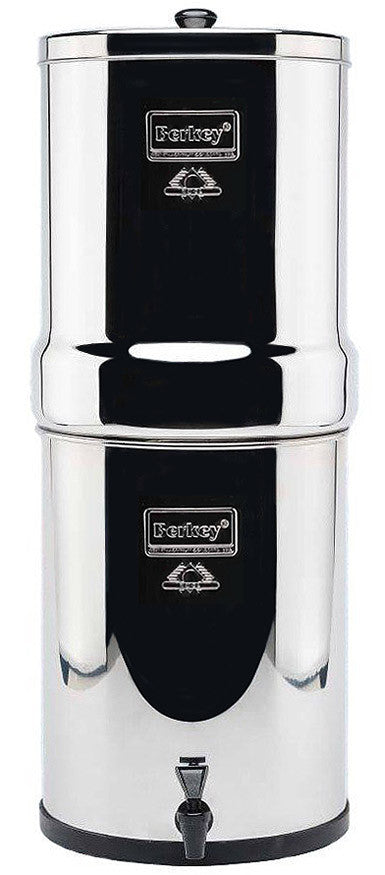
New York State is leading the charge for specific drinking water standards for three toxic chemicals: 1,4-dioxane, PFOS, and PFOA.
The state of New York adopted drinking water standards for three toxic chemicals this year. New York adopted a drinking water standard for 1,4-Dioxane, setting the maximum contaminant level at 1 part per billion.
The standard is the first in the U.S. New York additionally adopted maximum contaminant levels for perfluorooctane sulfonate (PFOS) and perfluorooctanoic acid (PFOA) in the state's drinking water at ten parts per trillion. It is among the lowest levels in the U.S. for the two contaminants.
Under the new guidelines, New York requires testing and monitoring for public water systems.
Governor Andrew Cuomo said, "While the federal government continues to leave emerging contaminants like 1,4-Dioxane, PFOA, and PFOS unregulated, New York is leading the way by setting new national standards that help ensure drinking water quality and safeguard New Yorkers' health from these chemicals.”
He added that the environmental movement was established in this great state. They will continue to work to protect their most valuable resources for a long time.
The New York Policy Director at the Natural Resources Defense Council, Rich Schrader, indicated that these drinking water standards are among the strictest in the country and an essential step in the battle to protect New Yorkers from this health crisis.
New York’s Drinking Water Program: Facts and Figures
Almost 95 percent of New Yorkers get water from public water supply systems in the state.
These systems extend from New York City, the largest engineered water system in the country, which serves more than 9 million people, to privately owned water source companies that supply municipalities, schools, and small businesses in rural regions with water, as well as draw water from their wells.
Altogether, there are more than 9,000 public water systems in New York State.
The table below indicates the number of systems by system type and the population served by each water system.
The reported total population of more than 21 million served by these systems depends on tallies that include water trades between systems, leading to multiple counts of the same population.
The overall population figure also includes customers obtaining water from temporary non-community systems. Other tallies of similar populations and consumers bring about a total value greater than the state's population.
Public Water Systems by System Type
|
Public Water System Type |
Number of Systems |
Population Served |
|
Community |
2,840 |
18,246,471 |
|
Transient non-community |
5,521 |
2,809,973 |
|
non-transient non-community |
725 |
262,957 |
|
Total |
9,086 |
21,319,401 |
The number of systems by water source type and the population served by these systems are given below.
The majority of the state's population relies on surface water. New York City and Long Island metropolitan areas supply public water across the state. Nine million people in the New York City water system depend on surface water.
Most groundwater supplies are concentrated around Nassau and Suffolk counties, representing almost 3 million consumers. The rest of the population accessing public water is mainly concentrated in cities, towns, and related suburban areas where public infrastructure has been established throughout the state.
A few systems are served by groundwater under the immediate influence of surface water (GUDI). GUDI sources require a similar degree of treatment as surface water sources.
Public Water Systems by Source Type
|
Primary Source Type |
Number of Systems |
Population Served |
|
Surface Water |
527 |
12,332,178 |
|
Ground Water |
7,998 |
4,766,297 |
|
Purchased Surface Water |
429 |
4,025,353 |
|
Purchased Ground Water |
132 |
195,573 |
|
Total |
9,086 |
21,319,401 |
Health Risks of 1,4-dioxane, PFOS, and PFOA

1,4-dioxane is in products that make bubbles, such as shampoo, liquid soap, and bubble bath. It infiltrates the skin and is considered a likely human carcinogen by the U.S. Environmental Protection Agency.
The National Toxicology Program records it as an animal carcinogen. California's Proposition 65 list of chemicals known or suspected to cause disease or birth defects included it. It isn't recorded on ingredient labels because 1,4-dioxane is made.
When basic ingredients like sodium laureth sulfate, PEG compounds, xynol, ceteareth, and oleth are mixed, they react.
EWG estimates that 1,4-dioxane is present in more than 22 percent of the more than 25,000 cosmetic products recorded in its database.
Since the U.S. Food and Drug Administration doesn't require product labels to list 1,4-dioxane, it's impossible to know what a product contains, making it difficult for customers to avoid it.
One way to avoid 1,4-dioxane in cosmetic products is to be certified by the U.S. Department of Agriculture's National Organic Program. Research by the Organic Consumers Association found that this ingredient is absent from cosmetic products certified by the USDA National Organic Program.
A study by EWG found that 1,4-dioxane contaminates the water supplies of more than 7 million individuals in 27 states.
PFOS and PFOA are among the chemicals called polyfluoroalkyl substances (PFASs). They are used to make fluoropolymer coatings and fight heat, grease, stains, oil, and water. PFOS and PFOA don't break down in nature, and they can travel through soil, pollute drinking water sources, and harm fish and wildlife.
They are found in soil, air, and groundwater over the U.S. Tests conducted by EWG discovered PFAS in drinking water in many U.S. cities. Researchers tested water from 44 areas in 31 states and the District of Columbia.
One example had no detectable PFAS, while two different areas had PFAS at levels that separate investigations show are dangerous to individuals.
Centers for Disease Control and Prevention researchers estimated that 12 PFAS were present in the blood serum of participants aged 12 and older. They found four PFAS, including PFOS and PFOA, in the serum of nearly all individuals tested.
That is an issue since research recommends that significant levels of PFAS may cause expanded cholesterol levels, changes in liver enzymes, and a greater risk of kidney or testicular cancer.
States Take Measure
Almost 50% of all states are attempting to draft their direction, regulations, or legislation to address PFAS-contaminated drinking water, rather than the absence of enforceable government principles.
In July, Michigan passed a law establishing the country's strictest levels for PFOA at 8 parts per trillion and for PFOS at 16 parts per trillion.
The government has set a lifetime health advisory level for the two chemicals at 70 parts per trillion.
3M Co. and DuPont were the first organizations to develop PFAS, dating back to the 1940s. Companies like Wolverine World Wide, Inc. have used chemical substances containing the specific PFAS, manufactured by 3M, DuPont, and Chemours, a DuPont side project. Also, W. L. Gore and Associates, Inc. makes a wide range of products, including semiconductors, sticky notes, shoes, and firefighting foam.
However, some chemicals don't break down effectively and persist in the environment and human bodies for quite a while, earning them the nickname "forever chemicals.” They have been connected to specific cancers, hormone disruption, and other ailments, as indicated by the U.S. Environmental Protection Agency.
The state health department has collaborated with other state offices to help examine, remediate, and fund water systems that exceed the adopted limits.
In 2018, the state declared $200 million in grants to assist communities with addressing PFOA, PFOS, and 1,4-dioxane in drinking water supplies, according to the health department. The grants help limit the economic effect of remediation on ratepayers.
Too Much, or Not Much Enough?

An industry group, the American Chemistry Council, said New York's new limit points are much stricter than expected to protect individuals.
The council stated that the EPA built a health advisory level of 70 parts per trillion for PFOA and PFAS, "well over" the new state limit. It said the animal liver impacts that are the reason for the PFOA limit in New York "don't seem pertinent to human exposure."
As far as possible, 1,4-dioxane is 50 times lower than the suggestion given by Health Canada and the World Health Organization, as indicated by the council.
As the council stated, it will continue to advocate on behalf of its members for policies that protect public well-being and depend on the best available science.
Environmental supporters commended the long-anticipated action, yet some said the state should have gone further.
Rob Hayes, the clean water associate at Environmental Advocates NY, said, “These new drinking water protections are the direct result of tireless advocacy by community members who have these chemicals in their blood.”
He added that the science is precise: to protect people from cancer and other health risks, New York must eliminate all PFAS from drinking water.
The Natural Resources Defense Council likewise called for additional action, citing many poisonous "forever" chemicals as dangerous to public health. Encouraging the general public to use a water filter, such as the Berkey Water Filter, would also be beneficial.
← Older Post Newer Post →





